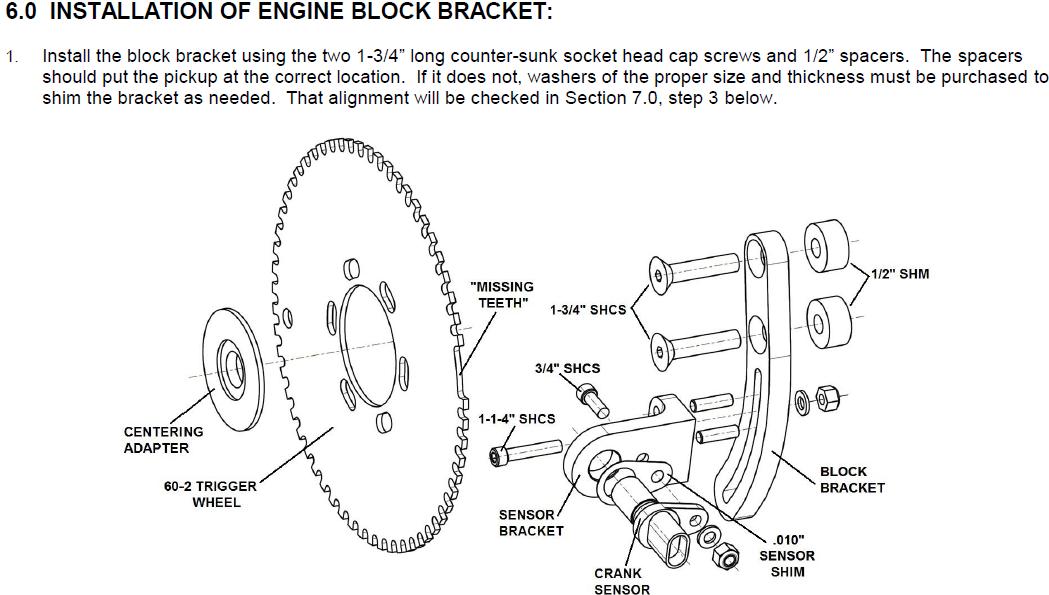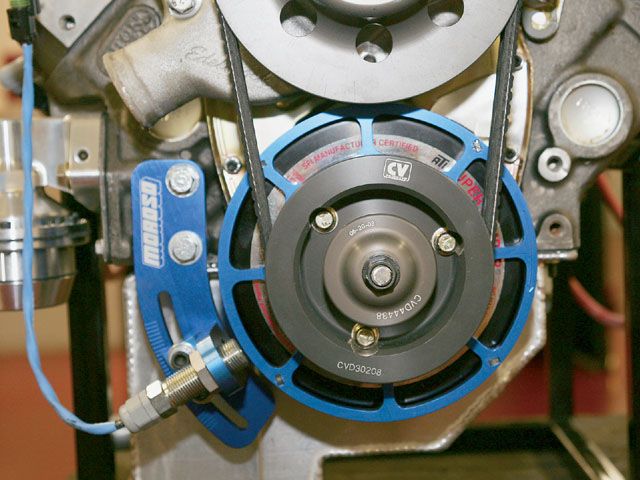It wouldn't be totally necessary to buy the tool shown below in the article. You could do something like
what I did just check the backlash in my new distributor. The way I'm measuring would be dependent on
how far from the distributor shaft centerline you took the reading, but if you always use the same location
it would provide a good reference to see how much wear you are getting over time.
The dial indicator is resting on the spring post, be sure to use the posts that are direct to the shaft and not
after the springs.
Distributor Backlash Tooling
http://www.dynoroomtools.com/Distributor_Gear_Backlash_Tool.html
When you think of all the stack up tolerances in an engine, why does everyone overlook the distributor gear play?
It is one of the most important relationships inside an engine.
Are you chasing spark scatter, or a variation in ignition timing PER CYLINDER? This is what you need to be investigating.
You would not dream of putting a ring and pinion together without checking backlash right?
So why should this be ignored?
Now you can check MEASURE the backlash in a repeatable manner.
Designed to work quickly and accurately... using YOUR distributor.
EASILY check how concentric your CAM GEAR is! (be ready for a surprise!)
Rigid tooling eliminates set-up errors as the dial indicator is always in the same position
*Use this tooling to MONITOR distributor gear wear between races*
Procedure:
1 - Remove cap and rotor
2 - Install Dial Indicator mount plate onto distributor housing
3 - Install Paddle wheel where rotor seats
4 - Turn the motor over by hand until the indicator stem is perpendicular to the first paddle.
5 - Zero indicator
6 - Move paddle back and forth and record the backlash
7 - Turn motor over to next paddle, line up zero on indicator
8 - Move paddle back and forth and record the backlash
9 - Repeat to Step 7 and record backlash in all four spots
The Tooling is available right now for:
295-1515 - MSD (incl 8570 low profile) $175
295-1516 - GM HEI $175
Coming soon for:
295-1517 - Ford
295-1518 - Mallory
295-1519 - Magnetos
AND others
Kits include: Suitable dial indicator mounting bracket, Paddle Wheel and adapters (if necc), Dial Indicator.
That handles the measuring task... now what?
Typical backlash is in the .030-.045+ range! We like to bring that down into the mid teens.
BUT HOW ARE YOU GOING TO REDUCE THE BACKLASH?
AVAILABLE OVERSIZE DISTRIBUTOR GEARS
Chevrolet V8:
Shaft size .500
Bronze (AMPCO 45) .003, .006, .009, .012, .015, .017
Melonized .003, .006, .009, .012, .015
Composite .003, .006, .009
Shaft size .491
Bronze .003, .012
Melonized .003, .012
Composite .003, .006, .009
Chrysler
Bronze .006, .012
Ford .502
Bronze .003, .006, .009, .012
Olds
Bronze .003, .009
PRICING:
Melonized gears
$68.75 each at 1 thru 3 quantity
$53.25 each at quantity of 4 thru 8 (mix and match oversize is OK)
$48.25 (9 - 15)
call for pricing on bulk
Attachments
Last edited:




